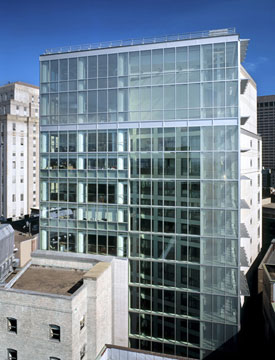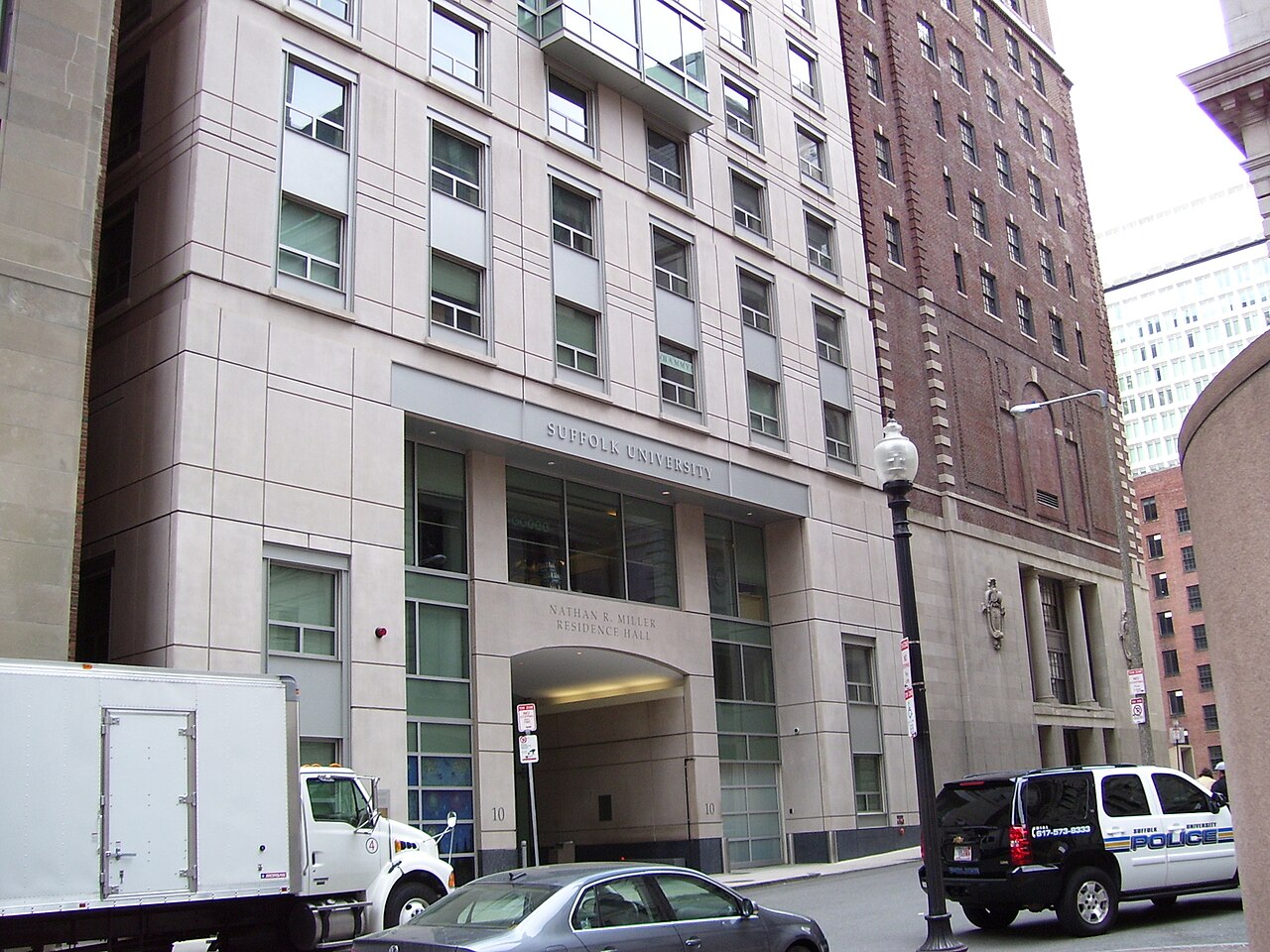You are using an out of date browser. It may not display this or other websites correctly.
You should upgrade or use an alternative browser.
You should upgrade or use an alternative browser.
Dorm Tower @ Emerson College | 1-3 Boylston Place | Downtown
- Thread starter 12345
- Start date
odurandina
Senior Member
- Joined
- Dec 1, 2015
- Messages
- 5,328
- Reaction score
- 265
4 thoughts adrift in the horse latitudes.
1. Springfield wants their infill back.
2. 218' of safe, sterile, dull, value engineered steel, concrete and rebar.
3. This is why Boston will never surpass San Fransisco...
4. Friends of the Public Garden: "Hey, Greg. Thanks buddy."
1. Springfield wants their infill back.
2. 218' of safe, sterile, dull, value engineered steel, concrete and rebar.
3. This is why Boston will never surpass San Fransisco...
4. Friends of the Public Garden: "Hey, Greg. Thanks buddy."
atlantaden
Senior Member
- Joined
- May 31, 2006
- Messages
- 2,606
- Reaction score
- 2,748
Why such a large blank wall along that side?
4 thoughts adrift in the horse latitudes.
1. Springfield wants their infill back.
2. 218' of safe, sterile, dull, value engineered steel, concrete and rebar.
3. This is why Boston will never surpass San Fransisco...
4. Friends of the Public Garden: "Hey, Greg. Thanks buddy."
Gotta love what was destroyed to build this, too.
stick n move
Superstar
- Joined
- Oct 14, 2009
- Messages
- 12,109
- Reaction score
- 18,945
4 thoughts adrift in the horse latitudes.
1. Springfield wants their infill back.
2. 218' of safe, sterile, dull, value engineered steel, concrete and rebar.
3. This is why Boston will never surpass San Fransisco...
4. Friends of the Public Garden: "Hey, Greg. Thanks buddy."
This 1 building is the reason Boston will never pass san francisco? Boston will be fine.
type001
Senior Member
- Joined
- Jun 29, 2006
- Messages
- 1,771
- Reaction score
- 318
This 1 building is the reason Boston will never pass san francisco? Boston will be fine.
Pay no attention to him. He is a moron.
This building is boring as all get out, but really, given where it is, did anyone expect some sort of architectural marvel? From what angles, (for those who live/work in the area), can you actually SEE this building? From someone who does, I will tell you... not many. Emerson is a good school, but not a particularly wealthy one. They are trying their best to relocate their students into dorms, and this is what we get. All in all, I will give it a C, which is what it takes to graduate from Emerson.
It is a dorm tower.... I didn't have high expectations for this in the first place, and yes, being a college building isn't a good excuse for crappy design/materials, but you can't expect the best either.
Eh... not a good excuse when this guy's on the other side of the Common:

https://www.flickr.com/photos/suffolkuniversity/sets/72157625493496280/
^^ Suffolk University's Nathan R. Miller Residence Hall. Certainly softens the view on that side of downtown:
https://goo.gl/maps/EHdf4RjQ5MM2
fits in nicely at the base, too:

This building is boring as all get out, but really, given where it is, did anyone expect some sort of architectural marvell?
Well for better or for worse, they built this crazy cube out in la like a year ago:

Eh... not a good excuse when this guy's on the other side of the Common
Suffolk is a law school with connections up the ying-yang. Money. Emerson is a school with a bunch of people dressing up and playing pretend. No disrepect to Emerson, my ex-lady graduated from it and their communications department is top notch, but the difference is stark when it comes down to the ability to raise funds for construction projects.
Equilibria
Senior Member
- Joined
- May 6, 2007
- Messages
- 7,086
- Reaction score
- 8,324
Suffolk is a law school with connections up the ying-yang. Money. Emerson is a school with a bunch of people dressing up and playing pretend. No disrepect to Emerson, my ex-lady graduated from it and their communications department is top notch, but the difference is stark when it comes down to the ability to raise funds for construction projects.
Let's not toot Suffolk's horn too much...

navigator4
Active Member
- Joined
- Aug 5, 2015
- Messages
- 225
- Reaction score
- 95
Suffolk is a law school with connections up the ying-yang. Money. Emerson is a school with a bunch of people dressing up and playing pretend. No disrepect to Emerson, my ex-lady graduated from it and their communications department is top notch, but the difference is stark when it comes down to the ability to raise funds for construction projects.
It did have the ability to raise funds, until its pathetic Board let its' PR consultant ruin the school.
stellarfun
Senior Member
- Joined
- Dec 28, 2006
- Messages
- 5,711
- Reaction score
- 1,544
Dormitories (residence halls) are cash cows.
They are even more of a cash cow when their construction can be financed out of institutional cash-flow.
They are somewhat less of a cash cow when the institution has to bond for the construction; financing costs eat into the revenue.
And they are even less, when the institution contracts with a private party to construct and operate the residence hall. (E.g., Northeastern. IIRC, its a measure of how much a dorm is a cash cow that I believe NU gets ownership of the privately built dorm in 25-30 years (and the end of its depreciated life) at no cost.)
College and universities place a premium on:
* Low maintenance
* Durability and a long useful life. Harvard is only now doing extensive renovation of the 'river houses', and these were built starting in 1930.
* Aesthetics and 'frills' to the extent that such add significantly to the cost, and reduce the net revenue, are frowned on.
* In many instances, university-owned housing has to be competitive with off-campus housing, so there is every incentive to fill the dorm rooms. If it costs a student $3-4,000 more a year to live in an architecturally spectacular residence hall, maybe they won't.
They are even more of a cash cow when their construction can be financed out of institutional cash-flow.
They are somewhat less of a cash cow when the institution has to bond for the construction; financing costs eat into the revenue.
And they are even less, when the institution contracts with a private party to construct and operate the residence hall. (E.g., Northeastern. IIRC, its a measure of how much a dorm is a cash cow that I believe NU gets ownership of the privately built dorm in 25-30 years (and the end of its depreciated life) at no cost.)
College and universities place a premium on:
* Low maintenance
* Durability and a long useful life. Harvard is only now doing extensive renovation of the 'river houses', and these were built starting in 1930.
* Aesthetics and 'frills' to the extent that such add significantly to the cost, and reduce the net revenue, are frowned on.
* In many instances, university-owned housing has to be competitive with off-campus housing, so there is every incentive to fill the dorm rooms. If it costs a student $3-4,000 more a year to live in an architecturally spectacular residence hall, maybe they won't.
Dormitories (residence halls) are cash cows.
They are even more of a cash cow when their construction can be financed out of institutional cash-flow.
They are somewhat less of a cash cow when the institution has to bond for the construction; financing costs eat into the revenue.
And they are even less, when the institution contracts with a private party to construct and operate the residence hall. (E.g., Northeastern. IIRC, its a measure of how much a dorm is a cash cow that I believe NU gets ownership of the privately built dorm in 25-30 years (and the end of its depreciated life) at no cost.)
Maybe...but shouldn't a mature cost-of-capital treatment view these as rough equivalents? I.e the opportunity cost of tying up cash flow in out-of-pocket financing should be in the same ballpark as the interest rate on paying for it through debt financing?
The real answer, of course, is that the real money is in selling the naming rights (pre-tax, natch) to a narcissistic alumni donor anyway.
That facade looks... really cheap.
At least it's not another orange dorm tower -- or has the BRA reserved that color scheme for Huntington Ave.?
stellarfun
Senior Member
- Joined
- Dec 28, 2006
- Messages
- 5,711
- Reaction score
- 1,544
Maybe...but shouldn't a mature cost-of-capital treatment view these as rough equivalents? I.e the opportunity cost of tying up cash flow in out-of-pocket financing should be in the same ballpark as the interest rate on paying for it through debt financing?
The real answer, of course, is that the real money is in selling the naming rights (pre-tax, natch) to a narcissistic alumni donor anyway.
Some colleges and universities don't seem to worry about opportunity costs. Looking at Amherst's balance sheet, as of June 30, 2015, it had $132 million in cash and cash equivalents, and it had spent about $170 million to operate the college for the 2014-15 academic year.
And its not that Amherst doesn't have debt, it paid over $17 million in debt service last year. But I think Amherst prefers to debt-finance buildings that are not revenue centers, like a library or a lab building. Amherst collected $22 million in room and board (from 1800 students), so a student's room 'rent' might be $9-10,000. Which would be a nice net income stream if such were undiluted by debt payments.
And you are correct about naming rights, but I think most schools would prefer naming rights (and associated gift(s) go to academic and athletic facilities, which don't always pay for themselves.
I said that there was almost nowhere that you could see this building. Your picture appears to be from Park St. I stand corrected.
Boston02124
Senior Member
- Joined
- Sep 6, 2007
- Messages
- 6,893
- Reaction score
- 6,639



